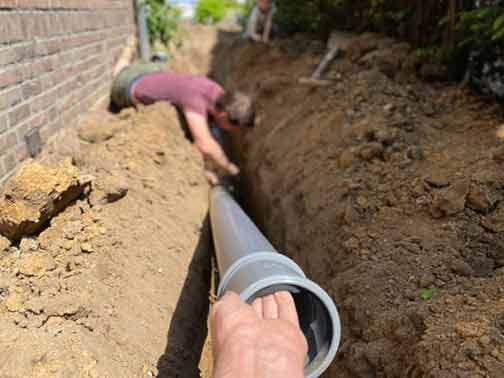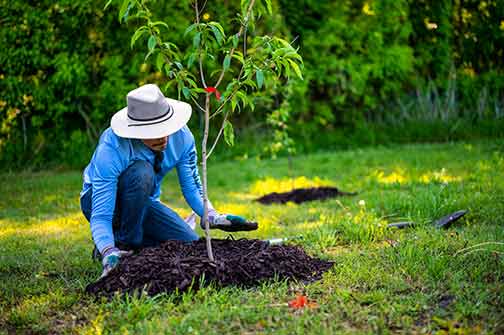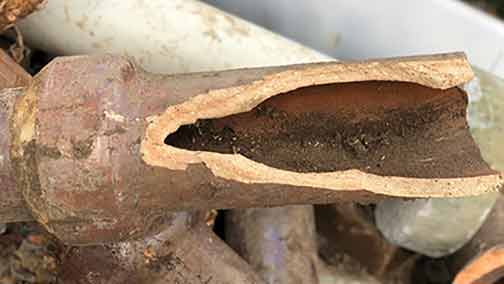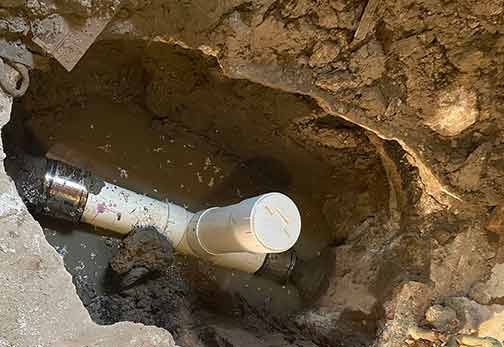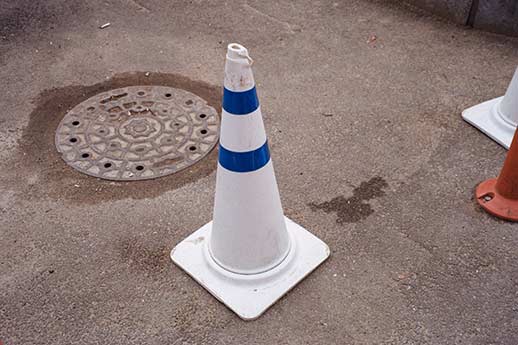
Curbing the complications of plumbing issues begins with understanding your system’s health. Therefore, you need to be aware of how to know if a sewer line is broken. Detecting early signs of these problems is key to preventing potential disasters!
Common causes of sewer line damage
Various sewer line problems can arise from various sources, making it essential for homeowners to be aware of common causes of damage. One frequent culprit is tree root infiltration, as tree roots naturally seek out water sources and can invade pipes, causing blockages and cracks. Aging pipes and corrosion are also common issues, with older materials like cast iron or clay deteriorating over time. Ground shifting and settling due to factors like earthquakes or soil erosion can also put stress on pipes, leading to misalignment or breakage. Blockages caused by debris, grease buildup, or flushing non-flushable items can lead to backups, too. Lastly, poor installation or lack of maintenance can exacerbate these problems. Recognizing these causes can help homeowners take proactive steps to prevent damage and avoid costly repairs.
Smells and odors
Smells and odors in your home can be telltale signs to know if a sewer line is broken. Foul sewer odors, whether inside or outside, are something you need to react to. These odors often indicate a leak or blockage in your plumbing. If you notice a sewage smell coming from your drains or toilets, it’s a clear signal of a plumbing issue that needs immediate attention. These odors can also pose health risks, so addressing them promptly is crucial. Detecting sewer gas leaks, which can contain harmful substances like methane, is also important for your safety. If you experience any of these odorous symptoms, don’t hesitate to call a professional plumber to camera inspect your sewer line and take the necessary steps to rectify things.
Slow drains and backups
Dealing with slow drains and frequent backups can be frustrating and may indicate underlying sewer line issues in your home. When sinks, bathtubs, or showers drain slowly, it’s often a sign of partial blockages in the sewer line. Toilet backups and gurgling noises can also point to problems further down the pipeline. However, it’s essential to differentiate between localized and widespread issues. Localized problems may be due to clogs within a single fixture, while widespread issues suggest a more significant concern with your entire system. Ignoring these signs can lead to more severe plumbing problems and potential damage to your property. If you experience slow drains or backups regularly, it’s wise to consult a professional plumber who can diagnose the issue.
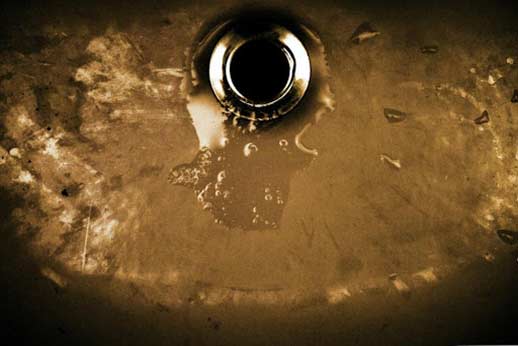
When you hear bubbling or gurgling sounds, it’s usually a sign of trapped air or blockages within the pipes.
Unusual noises and gurgling
Unusual noises and gurgling sounds in your plumbing system are clear indicators of potential sewer line problems. When you hear bubbling or gurgling sounds, it’s usually a sign of trapped air or blockages within the pipes. These noises occur as the air gets displaced or when water encounters obstructions. Investigate promptly, as these noises may be a precursor to more severe sewer line damage. In some cases, they can also be accompanied by slow drains, backups, or foul odors.
Visible sewage in your yard
Spotting visible sewage in your yard is a concerning situation that demands immediate attention. When you notice soggy or flooded areas in your outdoor space, you can be sure there’s trouble. These sewage leaks can pose health risks and damage your property, so addressing the issue promptly is crucial. Conducting a dye test can help confirm the source of the problem and determine whether it’s related to your sewer line. In situations like this, it’s not just about fixing the sewage problem; it’s also crucial to safeguard your belongings, especially those in vulnerable areas like basements or ground-level rooms. In such cases, you need to find a moving company that can act quickly and reliably, such as Brooklyn Movers New York. Choosing them means you’re opting for a company that understands the urgency and sensitivity of such situations. Their experience in handling delicate moves ensures that your belongings are in safe hands, allowing you to focus on addressing the sewage issue without the added stress of safeguarding your possessions. They offer prompt and efficient services with well-trained teams that would allow you to get your items out of your basement or ground-level rooms before the sewage can get in and destroy them.
Pest and rodent infestations
Pest and rodent infestations often go hand in hand with sewer line problems, posing additional concerns for homeowners. When something damages your plumbing and causes leaking, it can attract pests and rodents like rats and cockroaches looking for a water source and food. These unwanted guests can enter your home through the cracks or openings, seeking refuge and multiplying rapidly. Signs of infestations such as droppings, gnawed wires, and unusual pet behavior are all something you should immediately react to, as they may indicate an issue. Addressing both the infestation and the underlying problem is crucial. So, seeking the services of a professional pest control company can help eliminate the pests, while a licensed plumber can assess and repair your plumbing to prevent future infestations.
Cracks and sinkholes
Cracks in your foundation or basement walls and sinkholes in your yard are critical signs of potential sewer line issues. These structural anomalies can significantly stress your plumbing, potentially leading to leaks or breaks. In such cases, it’s essential to contact an emergency plumber immediately. Delaying the response can exacerbate the problem and result in more extensive damage. These issues may also compromise the safety of your home’s foundation.
High water bills
If you’ve noticed sudden spikes in your water bills without an apparent cause, it can be a way to know if a sewer line is broken. High water bills can often indicate an underlying issue with your plumbing system. A hidden water leak within the sewer line can lead to continuous water usage, causing your bills to inflate significantly. Monitoring your water bills and seeking professional help when you notice unusual increases is crucial. A licensed plumber can perform a thorough inspection, using specialized equipment to detect the source of the underground leak. By addressing these issues promptly, you save on your water bills and prevent potential water damage to your property.
Professional inspection and diagnosis
When it comes to your sewer line and plumbing system, sometimes DIY attempts to know if a sewer line is broken won’t cut it. Therefore, it’s crucial to hire a professional to check things out. Licensed plumbers have the expertise and specialized equipment necessary to conduct a thorough inspection and diagnosis. They can identify hidden issues, assess the condition of your plumbing, and determine the extent of any damage.
Know if a sewer line is broken to make the right plumbing moves
Recognizing the signs of a damaged sewer line is essential to maintain a trouble-free plumbing system. Staying vigilant and acting promptly can save you time, money, and the headache of dealing with severe issues. Now that you know how to recognize if a sewer line is broken, don’t hesitate to seek professional sewer line repair, ensuring the longevity and reliability of your plumbing system!
